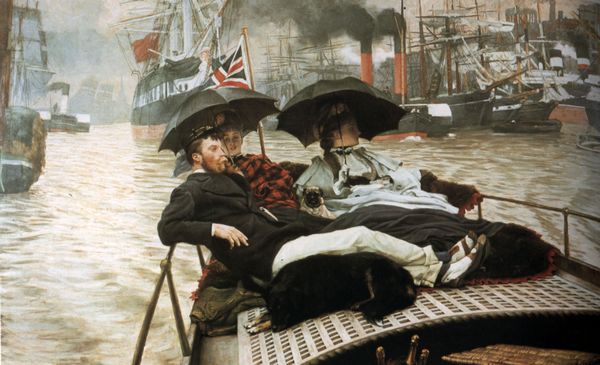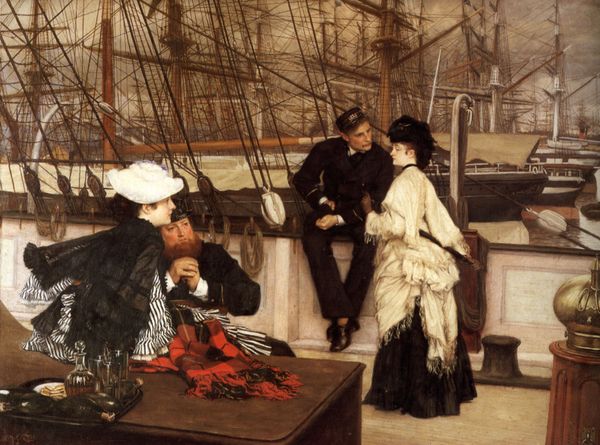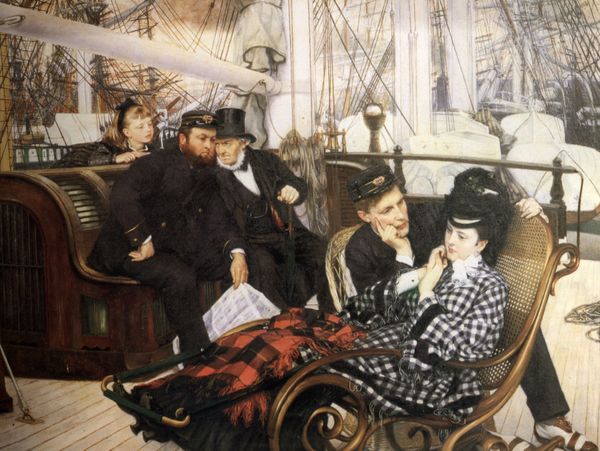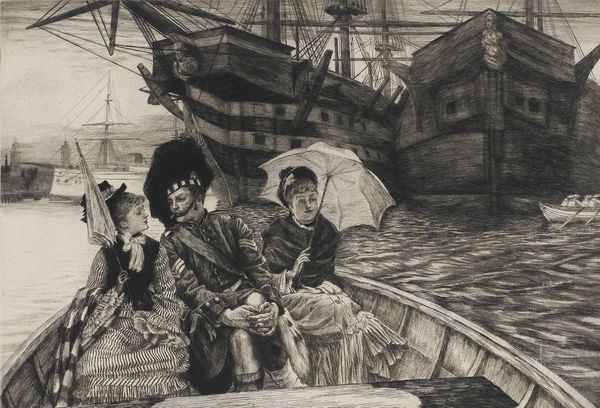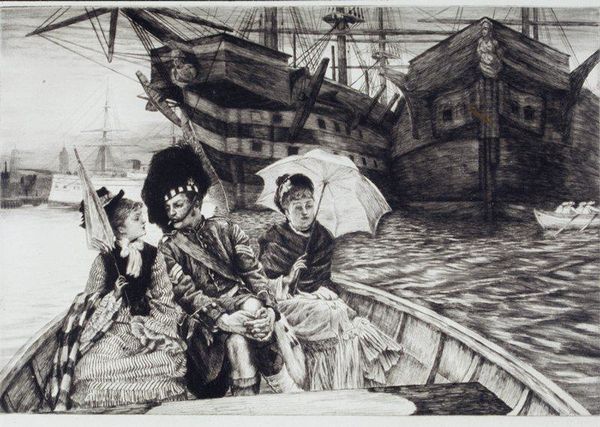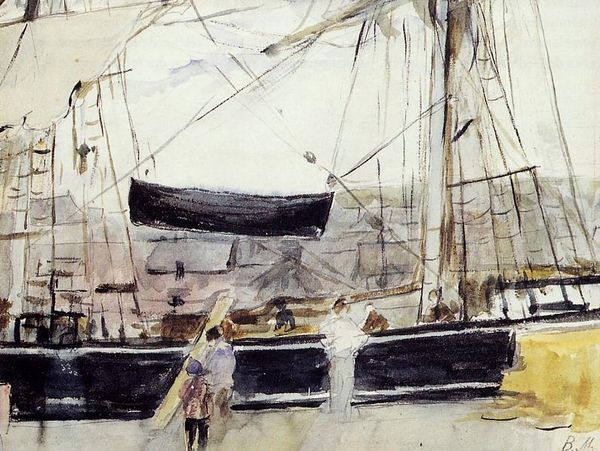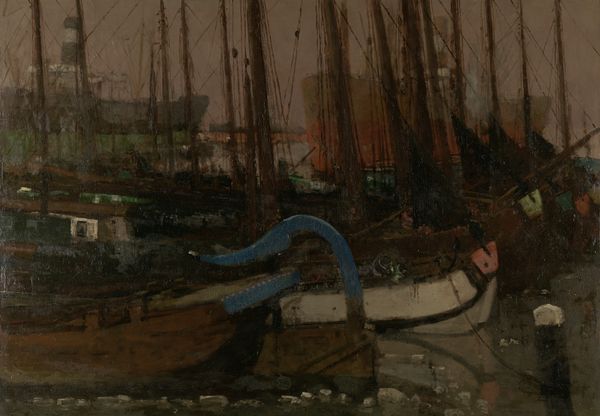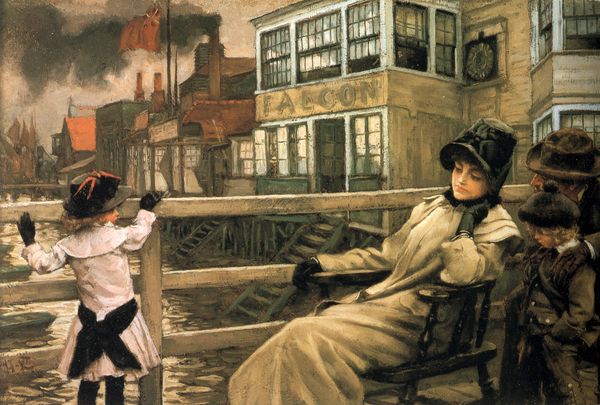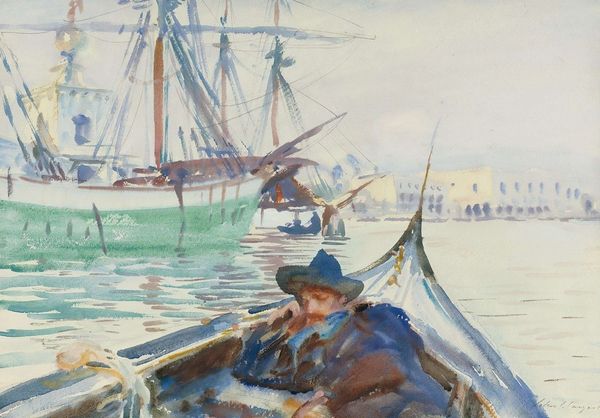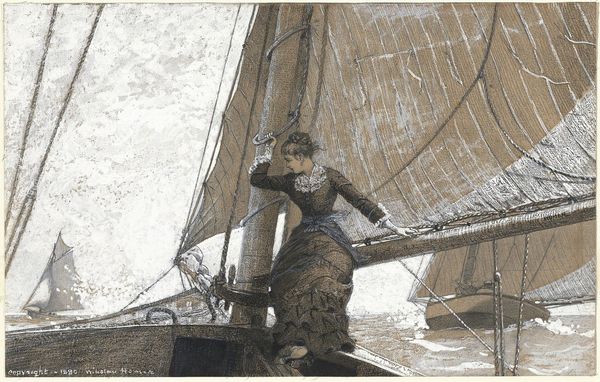
oil-paint
#
portrait
#
ship
#
impressionism
#
oil-paint
#
landscape
#
oil painting
#
water
#
genre-painting
Dimensions: 38.1 x 54.6 cm
Copyright: Public domain
Editor: So, this is James Tissot's "Portsmouth Dockyard," painted in 1877. It's an oil painting currently residing at Tate Britain. I'm struck by how the grandeur of the ships contrasts with the seeming indifference on the faces of the figures in the boat. What can you tell me about its historical significance? Curator: Well, it presents a fascinating lens through which to view Victorian society and its relationship with the Royal Navy. Dockyards like Portsmouth were not just industrial spaces; they were potent symbols of British power and global reach. The juxtaposition you noticed isn't accidental; it reflects the social complexities of the time. Editor: How so? Curator: Consider the figures themselves. We have fashionably dressed individuals, likely middle or upper class, being rowed past these massive warships. Tissot highlights the contrast between civilian leisure and the infrastructure of empire. How does this visual hierarchy contribute to the overall meaning, in your opinion? Editor: I guess it's saying that while the dockyard enabled Britain's power, the lives of ordinary, privileged people went on relatively unaffected by the massive resources it takes to create and maintain a Navy. Does the setting itself -- the dockyard -- play a key part in communicating those ideas? Curator: Absolutely. Tissot chose to depict this scene within the physical and symbolic shadow of naval power. By showing this blending of social classes, what critique do you believe Tissot offers, if any, about the British Empire or even genre-painting's conventional subjects? Editor: I see now. It is a social commentary, positioning everyday life alongside imperial infrastructure to highlight both the human cost and detached opulence within a powerful society. Thanks, I understand it so much better now. Curator: And I can see it also gave you an avenue to really dissect how art acts as a reflector, both praising and criticizing societal forces simultaneously. Very insightful.
Comments
No comments
Be the first to comment and join the conversation on the ultimate creative platform.
